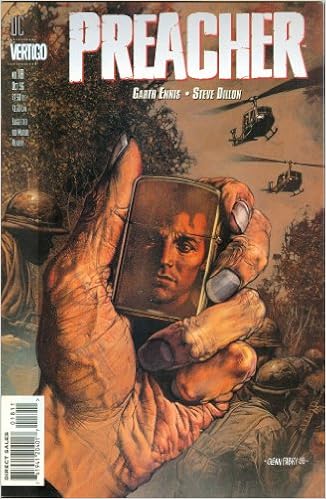Maybe some folks are fans but I never needed more of this dude.
Announcement
Collapse
No announcement yet.
Bill Jemas returns to comics
Collapse
X
-
-
Jemas doesn't ring a bell for me as far as a "name" in the industry. Here's the industry in a nutshell right now as I see it:
Marvel more than DC is only interested in selling. Selling anything...literally. And they want no overhead cost at all...see the whole "Bazillion variant covers per issue" as an example. They charge $4 - $6 per comic and as high as $10 on big event/anniversary issues...and it's all "Gravy" as far as profit goes. Books cost Marvel ZERO to maybe, MAYBE, 25 cents to print. Anyone that is familiar with the variant program that stores/companies can do for their store/company can confirm that it's around $10K + extra fees depending on which artist does your cover for a guaranteed 3000 copies for your store. Variant covers are in the 10 + per issue these days...more if it's an event. Print runs are small....100,000 per issue is pushing it. And all it is a switched plate for the cover because the interiors are the same. And Marvel plays the game cause they know that the collectors will eat that stuff up. Marvel knows that the 1st prints will sell out...and already have 2nd/3rd etc already ready to go before the first one has finished drying. Marvel knows that they can sell there books for $3 and still make $$$. This variant stuff will kill the LCS sooner than later.
DC still has respect for readers...they just can't get any sort of continuity with their books/movie/TV Universe. And they don't do the 10 + variant game. For that reason I still will look at a DC Comic book when it comes out. Marvel...nope. I think my Marvel stuff has been cut to maybe 2 or 3 books a month....This leads to my reasoning that may be a reason why a new company could succeed.
Image used to be an absolute joke when Liefeld/McFarlane etc were there. Quality was never their endgame. I've been pleasantly surprised by the sheer quality that is coming from Image and other independents. And at a lower price with almost NO ads in their books. THAT is what will make or break an indy company these days. As long as you can maintain quality and keep prices lower than Marvel and or DC you can succeed in the industry. Like I said Jemas' name doesn't ring a bell for me as far as any association with Marvel...so any content on his shady dealings may change my mind...but I'm all for more competition in the comic book industry. I just feel really bad for LCS that has to try and keep up with all the "new" stuff coming out. Little bit of a headache...but keeping on top of it will help them last a little bit longer. That and see how much longer Marvel and DC's contract with Diamond exclusivity is still left. That is also KILLING the LCS in my opinion. Diamond is a Monopoly that should have been stopped a long time ago.Last edited by Blue Meanie; Aug 28, '18, 1:57 PM."When not too many people can see we're all the same
And because of all their tears,
Their eyes can't hope to see
The beauty that surrounds them
Isn't it a pity".
- "Isn't It A Pity"
By George Harrison
My Good Buyers/Sellers/Traders list:
Good Traders List - Page 80 - Mego TalkComment
-
Remember publishers only get about 25% of the cover price. That $4 Marvel comic is sold by Marvel to Diamond at $1, Diamond sells it to retailers at $2 and retailers sell it for $4 minus whatever discount they give to customers. And out of that $1 per copy they get, they have to pay creators, editorial, marketing, support staff, utilities for their offices, etc. etc. etc. as well as publishing and transport costs. With the small size of print runs, economy of scale works against them and it costs more per copy to print a book that sells 2--25K copies than one that does 100K+ and more tp print a book that sells 100K per copy than one that sells 250K, and there are only on average 3-5 books per month from all publishers combined that exceed 100K in sales. And you also have to consider that those sales numbers are retailer orders, not actual sales to end customers, and most retailers are looking to sell 4 out of every 5 copies then buy because that is the tipping point between losing money and making money on a title. I dislike most variants though I sometimes buy blank variants for commissioning sketch covers or variants by particular creators as art pieces rather than comics, but the customer pool is now so small for print comics that the variant market has almost become a necessity to keep print runs up high enough where economy of scale does not flip and make printing costs too high to be tenable and make print comics a true niche product (they're almost there now). Look at how print went with products like war games and even tabletop rpg products that were not from Wizards of the Coast or Paizo went in the last 10-15 years to see what happens when a once mass market hobby product becomes a niche product to an untenably small customer base. The problem is that there has been no entry market in the mass market since the early 90s so there has not been enough new customers coming in to replace customers aging out, dying, losing interest, or stopping purchases for whatever other reason (you can also see it in why the relaunched Mego wants to be a mass market product and not a niche collector product as FTC is-price and availability to customers who are not already fans to keep your product sustainable in the long term are the key advantages you have with a mass market product that are lacking int he collectibles product market). Comics cover price increases have outpaced inflation because the customer base has shrunk and moved them more towards the niche collectible product than a mass market entertainment product. Variant covers and such are a short term (and short sighted) band aid solution to keep things sustainable for a while, but they are not truly a cash grab because sales of print are not robust enough for them to truly generate lots of revenue.Jemas doesn't ring a bell for me as far as a "name" in the industry. Here's the industry in a nutshell right now as I see it:
Marvel more than DC is only interested in selling. Selling anything...literally. And they want no overhead cost at all...see the whole "Bazillion variant covers per issue" as an example. They charge $4 - $6 per comic and as high as $10 on big event/anniversary issues...and it's all "Gravy" as far as profit goes. Books cost Marvel ZERO to maybe, MAYBE, 25 cents to print. Anyone that is familiar with the variant program that stores/companies can do for their store/company can confirm that it's around $10K + extra fees depending on which artist does your cover for a guaranteed 3000 copies for your store. Variant covers are in the 10 + per issue these days...more if it's an event. Print runs are small....100,000 per issue is pushing it. And all it is a switched plate for the cover because the interiors are the same. And Marvel plays the game cause they know that the collectors will eat that stuff up. Marvel knows that the 1st prints will sell out...and already have 2nd/3rd etc already ready to go before the first one has finished drying. Marvel knows that they can sell there books for $3 and still make $$$. This variant stuff will kill the LCS sooner than later.
DC still has respect for readers...they just can't get any sort of continuity with their books/movie/TV Universe. And they don't do the 10 + variant game. For that reason I still will look at a DC Comic book when it comes out. Marvel...nope. I think my Marvel stuff has been cut to maybe 2 or 3 books a month....This leads to my reasoning that may be a reason why a new company could succeed.
Image used to be an absolute joke when Liefeld/McFarlane etc were there. Quality was never their endgame. I've been pleasantly surprised by the sheer quality that is coming from Image and other independents. And at a lower price with almost NO ads in their books. THAT is what will make or break an indy company these days. As long as you can maintain quality and keep prices lower than Marvel and or DC you can succeed in the industry. Like I said Jemas' name doesn't ring a bell for me as far as any association with Marvel...so any content on his shady dealings may change my mind...but I'm all for more competition in the comic book industry. I just feel really bad for LCS that has to try and keep up with all the "new" stuff coming out. Little bit of a headache...but keeping on top of it will help them last a little bit longer. That and see how much longer Marvel and DC's contract with Diamond exclusivity is still left. That is also KILLING the LCS in my opinion. Diamond is a Monopoly that should have been stopped a long time ago.
Neither Marvel nor DC make much money from their publishing arms. Licensing and exploiting the IP in other media (for example children's early reader books featuring Marvel characters sell better than actual comics featuring their characters do). They aren't losing money (yet) but they aren't selling enough to make it attractive. Hell, Disney even feels they make more money from licensing Disney characters to other publishers to produce comics featuring those characters (right now IDW does Mickey, Uncle Scrooge, Duck Tales etc. plus Star Wars comics aimed at younger readers, and even licenses Marvel characters to Archie to produce reprint digests rather than produce them themselves). The publishing arms of both Marvel and DC are interested in producing enough revenue on the quarterly corporate reports to keep their division viable for another quarter, another year. Cash grab, maybe, but one motivated by survival mode not greed. Marvel's approach right now is to double down on the direct market and try to generate as much revenue form the existing customer base as possible. DC is taking more risks trying to grow the customer base through things like the WalMart exclusive comics, the Black Label line, the Ink/Zoom young readers line that produces OGN targeted at kids in the young adult market buying comics in the book market like Dog Boy, Captain Uderpants, the Raina Telgmeier books that you can find at Target, Walmart, Barnes & Noble, Amazon, etc. rather than most comic shops but are still looking to exploit the current customer base as best they can with things like the Rebirth initiative, variants, Doomsday clock, etc.
When people talk about the health of the comic industry, they look at dollar revenue, not units moved. If you are saying your revenue finally surpasses pre-crash levels after 20 years as they did a couple years back, they are looking at dollars sold, but if your product sells for 4X as much as it did 20 years ago and you are barely making more money than you did 20 years ago, then you are moving a much smaller number of units overall. And that is the situation you are in. Plus those revenue number include everything from $500 statues and $40 t-shirts to the comics they sell, and those types of product weren't a prominent part of the industry offerings pre-crash, so that skews those dollar numbers even more.
For the comic companies become healthier, they need to find a larger customer base to sell to. They won't find that in the direct market and they won't find that with a monthly periodical product that sells for any amount that doesn't offer a complete story because it is a product that no longer has mass market appeal.
Variant covers and cash grabs are not the issue. The issue is the big 2 publishers went all in on their existing audience and the direct market because it was profitable at the time without consideration of how to replace customers lost to attrition and now more importantly the audience for monthly periodical comics as produced by the big 2 has been consistently shrinking for nearly 3 decades without any mechanism in place to bring in new customers and it is time to pay the piper for that. The crashes drove customers away sure, but they were bleeding customers at a regular rate and would have bled off too large a piece of their customer base eventually. Crashes sped up the process, they didn't cause it and they aren't the reason why comics are facing these issues, they just sped up the process by about 5-7 years. The steady attrition rate would have brought comic sales numbers to where they are now within 5-7 years even if they didn't lose people to crashes and other hot button issues people want to point to as having ruined comics.
Jemas, as much as I dislike him, was able to turn Marvel around (along with Quesada) and help navigate Marvel out of the disastrous position they were in post-bankruptcy (mostly resulting from the fallout of the distributor wars Marvel initiated by acquiring Heroes World and leading to the loss of every comic distribution company except Diamond). However, his attempts to replicate that success and capture lightning in a bottle since have flopped, and I suspect this venture will too, because he like several other small companies, are chasing the wrong dogs in this race. They are trying to re-slice the small and shrinking pie that is the direct market comic sales rather than trying to grow the pie of comic readership overall. They are trying to play the comic market as a zero-sum game rather than growing the market overall so everyone can benefit.
-M"Opinion is the lowest form of human knowledge. It requires no accountability, no understanding." -PlatoComment
-
If comics are a loss leader then why bother publishing a physical comic at all??!!?? I've heard argument over and over and my thing is if it's not making money, and you are losing money, it's time to pack up and go home as they say. I understand you can say it's a loss on your taxes etc. But really, why even bother. Go digital and let it be done with already. That's why I don't believe for one minute that physical print isn't making them any money. Someone isn't telling the truth as far as numbers that are being bandied about. It reminds me of when Magazines would give away "free" subscriptions online just so they can maintain money coming in from investors. Nobody wins in that situation...in time they will eventually fall short of the needed numbers to maintain publishing of said book. Again, if that is the case...just go digital and be done with it. Then you will see the real numbers because there will be a major drop off...especially with the older collectors that need the physical format to keep their collections going. Without the "collecting" mentality...the industry will eat itself in my opinion. I really do feel that the "short term" mentality of the newer collectors is NOT what the industry wants or needs to stay afloat. Again, just my opinion."When not too many people can see we're all the same
And because of all their tears,
Their eyes can't hope to see
The beauty that surrounds them
Isn't it a pity".
- "Isn't It A Pity"
By George Harrison
My Good Buyers/Sellers/Traders list:
Good Traders List - Page 80 - Mego TalkComment
-
That's a great breakdown, Mike. You could swipe movie studio for comics company and it's the same business model. Ticket and comic prices both unpegged from inflation around the same time and forced themselves into a spot where they now need 1 ticket/comic to equal 3 buyers. I was banging the drum on this almost a decade ago.
Does anyone remember the mantra that superhero movies will create a whole new generation of comic fans? Yet nobody noticed comics had become such a byzantine mess, they were antithetical to how the movies were developed. To me, Superboy Prime is the poster child for the 2k's.Comment
-
The pricing structure breakdown for Diamond is publicly available. They pay 25% of cover price to the publishers. Retailers pay anywhere from 40-60% of cover to Diamond depending on the size of the account, with 50$ being the average or norm (someplace like Mile High that does mail order and orders every title in higher quantity because of it gets a better deal from Diamond because of the bulk size of the order, but your average mom and pop comic shop isn't getting that kind of volume discount form Diamond, and none of that changes how much Diamond pays the publishers.If comics are a loss leader then why bother publishing a physical comic at all??!!?? I've heard argument over and over and my thing is if it's not making money, and you are losing money, it's time to pack up and go home as they say. I understand you can say it's a loss on your taxes etc. But really, why even bother. Go digital and let it be done with already. That's why I don't believe for one minute that physical print isn't making them any money. Someone isn't telling the truth as far as numbers that are being bandied about. It reminds me of when Magazines would give away "free" subscriptions online just so they can maintain money coming in from investors. Nobody wins in that situation...in time they will eventually fall short of the needed numbers to maintain publishing of said book. Again, if that is the case...just go digital and be done with it. Then you will see the real numbers because there will be a major drop off...especially with the older collectors that need the physical format to keep their collections going. Without the "collecting" mentality...the industry will eat itself in my opinion. I really do feel that the "short term" mentality of the newer collectors is NOT what the industry wants or needs to stay afloat. Again, just my opinion.
So for a $3.99 product, the publisher gets $1. If it's a top seller i.e. it sells 100K copies, they get $100,000 in revenue from print copies, plus a slightly higher percentage for digital copies sold. They also get revenue from the sale of the same content in hardcovers, trade paperbacks and later omnibuses down the line at a slightly higher profit margin because they do no have to pay page rates to creators in those formats, only royalties if the sales reach high enough levels for the participation royalties to kick in. Marvel also generates revenue providing that content in their Marvel Unlimited subscription service from subscription fees, so it's not just about how much revenue the material generates in print form, but how long producing the material creates a revenue stream, and each format is a piece of the puzzle. Hoever, the sale of the content in the monthly periodical format is becoming a smaller piece of that puzzle.
It's also about trademarks. Trademarks provide the ability to monetize IP. Trademarks are completely different than copyrights and never expire unless you stop using them/ Trademarks are tied to specific formats quite often, so you have to show use in that format to maintain the trademarks that give you control of the IP and the ability to monetize it all. It's why publishers like Marvel and DC resurrect certain titles every few years and use them (like DC publishing a GI Combat title that had nothing to do with the previous book, or Marvel using Journey into Mystery as a title every so often), doing so shows use and fulfills the requirements to do so to maintain the trademark preventing others from using the title. Revenue streams in publishing don't just come from the initial print runs and sales of it. At this point, print publications for the corporations who own DC and Marvel are the equivalent of marketing and R&D arms, the value isn't in how much money they make directly, it's in how many revenue streams and how much overall revenue they help the company to create. Marvel and DC are not publishing companies, they are publishing divisions within larger entertainment media companies. They do not have to make money on the products they produce alone, they have to create revenue making opportunities for the company as a whole, and the trademarks provided by publishing those books and the IP they represent generate more than enough revenue overall to keep the publishing divisions operating in some format*
*one thing to consider is that there is growth in sales of comic content in print form-however it is not in the monthly periodical format sold in the direct market, it is in the book format sold outside the direct market. i.e. the book trade. Scholastic sales of some Marvel characters (the new Ms. Marvel and Moon Girl and Devil Dinosaur in particular) are through the roof, and overall sales of the trades is more profitable than the sales of the individual issues on those titles. DC sales of Super-Hero High/DC Super-Hero Girls trades/OGN in the young adult book markets were robust enough to lead DC to create the Ink and Zoom lines telling stories in that OGN format focused on selling to young readers who get material through the book trades rather than comic shops. DC's evergreen sellers in trade paperback (things like Watchmen, Dark Knight. Sandman, Preacher, Batman Year One, etc.) have sold more in trade paperback/hardcover format than they ever did as individual issues and have provided a consistent revenue stream for the company over decades rather than inconsistent month to month sales of periodicals and has lead DC to try to create more of that type of material with evergreen potential meant to have a longer shelf life in collected format with the creation of their Black Label imprint that is launching later this year. Their Wal Mart 100 page giants are another outreach for sales outside the direct market and a change tot he traditional monthly format, again looking for growth markets outside the sale of traditional monthly periodical print products because sales in that market have shown zero real growth for a long time and there is growth for comic material in other formats and other markets. The direct market selling print periodicals still serves a function in the overall business plan, but it is no longer the entirety of the business plan and no longer the main revenue provider for the content being produced. It is just the initial point of sale meant to recoup production costs of the material that will then provide much more profitable revenue streams as it in packaged and sold in different formats and in different markets.
-M"Opinion is the lowest form of human knowledge. It requires no accountability, no understanding." -PlatoComment
-
Jemas' last project was in ill-conceived and baffling trans-media attempt at expanding Night of the Living Dead into a line of comics. It is popular opinion that the successes in his reign at the post-bankruptcy Y2K era Marvel was in placing his trust in Joe Quesada whom he made EIC.

Axel Alonso actually has a pretty good track record in the past at Marvel. As a former Vertigo editor, he had a relationship with some of the industry's best writing talent at the time and flourished as a group editor under EIC Quesada, before ascending to EIC when Quesada was promoted up.
Some of the comics that Alonso has edited:



Comment




Comment